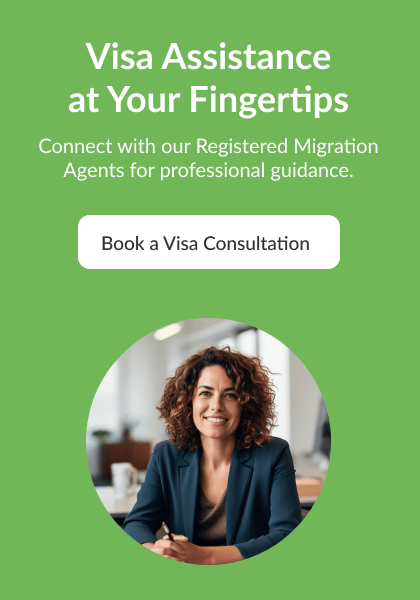Australia is a popular destination for young travellers who wish to combine work and leisure through the Working Holiday Visa (WHV). This visa allows individuals to experience Australia while earning money to support their stay. However, many who come on this visa fall in love with the country’s lifestyle, culture, and opportunities and may wish to extend their stay. If you find yourself in this situation, switching from a Working Holiday Visa to Employer Sponsorship could be the ideal pathway for you to remain in Australia for the long term.
In this comprehensive guide, we’ll explore the steps involved in transitioning from a Working Holiday Visa to an Employer-Sponsored Visa, including the eligibility criteria, application process, and tips to improve your chances of success.
What is the Working Holiday Visa?
The Working Holiday Visa (subclass 417) and the Work and Holiday Visa (subclass 462) are temporary visas that allow young people, generally aged 18 to 30 (or 35 for some countries), to work and travel in Australia for up to 12 months. These visas are a great way to explore Australia while taking up short-term employment to fund your travels. Holders of the WHV can work for any employer for up to six months, after which they need to switch to a different employer.
While the Working Holiday Visa offers a fantastic short-term experience, it is limited in duration. For those looking to stay longer, transitioning to an Employer-Sponsored Visa provides a pathway to extend your stay and potentially work towards permanent residency.
The Pathway to Employer Sponsorship
Switching from a Working Holiday Visa to an Employer-Sponsored Visa can be a game-changer if you wish to remain in Australia for the long term. Here are the key steps and considerations for making this switch:
1. Secure a Sponsoring Employer
The first step in transitioning to an Employer-Sponsored Visa is to find an employer willing to sponsor you. Employers must be registered and approved by the Australian government as sponsors. They must also demonstrate that they cannot fill the position with an Australian citizen or permanent resident.
Popular industries for employer sponsorship include:
- Healthcare
- Construction
- Engineering
- IT and Software Development
- Hospitality and Tourism
Many people on Working Holiday Visas work in casual or seasonal jobs, but transitioning to employer sponsorship typically requires securing full-time, long-term employment.
Tips for Finding a Sponsor:
- Network and connect: Engage with industry professionals, attend networking events, and make connections within your field.
- Impress during your WHV job: Many employers are open to sponsoring employees if they have demonstrated their skills and commitment during their short-term employment.
- Target sectors with high demand: Some industries face skill shortages and may be more likely to sponsor foreign workers.
- Leverage recruitment agencies: Specialised recruitment agencies can connect you with employers looking for sponsored workers.
2. Choose the Right Visa
There are several employer-sponsored visa options, but the most common pathways for WHV holders are the Temporary Skill Shortage (TSS) Visa (subclass 482) and the Employer Nomination Scheme (ENS) Visa (subclass 186). Let’s break down these options:
Temporary Skill Shortage (TSS) Visa (subclass 482)
The TSS visa is a temporary visa that allows skilled workers to live and work in Australia for an approved employer for up to four years, depending on the occupation. It can serve as a stepping stone towards permanent residency.
Key requirements include:
- You must have an employer who is willing to sponsor you.
- Your occupation must be on the Consolidated Sponsored Occupation List (CSOL).
- You need at least two years of relevant work experience in your nominated occupation.
- You must meet the English language requirements.
Employer Nomination Scheme (ENS) Visa (subclass 186)
The ENS visa is a permanent residency visa for skilled workers who are nominated by an employer. It is a great option if you’re looking to stay in Australia permanently.
There are two main streams under this visa:
- Direct Entry Stream: Suitable for workers who have not previously worked for their sponsoring employer but meet all the requirements, including relevant qualifications and skills.
- Temporary Residence Transition Stream: Suitable for those who have already worked for their employer for at least two years on a TSS visa and wish to transition to permanent residency.
Eligibility Criteria for Employer Sponsorship
To transition from a Working Holiday Visa to an Employer-Sponsored Visa, you must meet several eligibility criteria, including:
1. Occupation Lists
Your occupation must be listed on either the Short-Term Skilled Occupation List (STSOL), Medium and Long-Term Strategic Skills List (MLTSSL), or the Regional Occupation List (ROL), depending on the visa stream you are applying for. These lists are updated regularly based on the demand for certain skills in Australia.
2. Relevant Skills and Experience
You will need to provide evidence of your qualifications, work experience, and skills in your nominated occupation. This may include:
- Certificates or diplomas from relevant training or educational programs.
- Employment references or contracts demonstrating your experience.
- For some occupations, formal skills assessments may be required from a designated authority.
3. English Language Proficiency
You must meet a minimum level of English proficiency, generally demonstrated by taking a test such as IELTS, PTE, or TOEFL. The exact score required depends on your visa and occupation.
4. Health and Character Requirements
All visa applicants must meet Australia’s health and character requirements, which typically include a medical examination and police checks.
The Application Process
The process of applying for an Employer-Sponsored Visa can be detailed, so it’s important to follow the steps closely:
Step 1: Employer Nomination
Your employer must lodge a Nomination Application with the Department of Home Affairs. They need to demonstrate that they are offering a genuine position and that the terms of employment meet Australian market standards.
Step 2: Visa Application
Once the nomination is approved, you can apply for your visa. This involves submitting evidence of your skills, qualifications, English language proficiency, and other supporting documents.
Step 3: Wait for a Decision
Processing times can vary depending on the visa subclass and the complexity of the application. Generally, TSS visas are processed more quickly than permanent visas under the ENS scheme.
Bridging Visas: What Happens Between Your WHV and Sponsorship?
If your Working Holiday Visa is close to expiring while you are in the process of applying for an Employer-Sponsored Visa, you may be eligible for a Bridging Visa. This visa allows you to stay in Australia while your new visa application is being processed. It’s essential to apply for the Employer-Sponsored Visa before your WHV expires to avoid any unlawful stay.
Benefits of Employer Sponsorship
Switching from a Working Holiday Visa to an Employer-Sponsored Visa comes with several benefits, including:
- Longer Stay: You can stay and work in Australia for up to four years on a TSS visa, with the potential for permanent residency.
- Pathway to Permanent Residency: Some employer-sponsored visas lead directly to permanent residency, offering you long-term security and the ability to settle in Australia.
- Career Growth: Employer sponsorship often involves more stable, full-time employment, allowing you to advance your career in Australia.
Challenges and Considerations
While employer sponsorship can offer a fantastic opportunity to stay in Australia, there are some challenges to be aware of:
- Finding an Employer: Securing a sponsor can be competitive, especially in regions where the local workforce meets the employer’s needs.
- Eligibility Requirements: Meeting the stringent eligibility criteria can be difficult, especially in terms of skills, experience, and English proficiency.
- Visa Conditions: If your visa is granted, you must abide by its conditions, including working only for your sponsoring employer.
Your Next Steps
Transitioning from a Working Holiday Visa to an Employer-Sponsored Visa is an exciting opportunity for those who want to extend their stay in Australia and continue building their careers. By finding a sponsoring employer, meeting the eligibility criteria, and navigating the application process, you can take a major step towards making Australia your long-term home. If you need personalised advice or assistance with your visa application, consider booking a consultation with one of our experienced Registered Migration Agents.
Considering a move to Australia or need assistance with your visa application? Book a visa consultation with our experienced Registered Migration Agents. Let us help you navigate the complexities of the Migration Program and take your first step towards a promising future in Australia.
FAQs:
1. Can I switch from a Working Holiday Visa to a Permanent Residency Visa?
Yes, switching to a permanent visa, such as the ENS (subclass 186), is possible after being sponsored by an employer.
2. How long does the employer sponsorship process take?
Processing times vary but can range from several weeks to months, depending on the visa type and complexity.
3. Can I work for multiple employers on an employer-sponsored visa?
No, you must work for the employer that sponsors your visa, unless you apply for a new sponsorship.
If you are planning to work in Australia, or if you are considering sponsoring talent to work in your business under the Temporary Skill Shortage (TSS) 482 visa, it’s crucial to stay informed about the latest changes to ensure your application is successful. For the most up-to-date information on the 482 visa, we encourage you to visit our official 482 visa page for comprehensive details on requirements, fees, and the latest updates.
Remember:
This post is for general informational purposes only and is not a substitute for professional immigration advice. Given the uniqueness of every case, engaging with a registered migration agent is highly recommended for bespoke guidance and to navigate the specific details of your situation effectively. Book a visa consultation with a Registered Migration Agent
Subscribe to our newsletter
Sign up to our weekly newsletter to get the latest news about all things visas & immigration.












